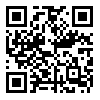

Volume 22, Issue 1 (7-2025)
ASWTR 2025, 22(1): 30-36 |
Back to browse issues page
Download citation:
BibTeX | RIS | EndNote | Medlars | ProCite | Reference Manager | RefWorks
Send citation to:



BibTeX | RIS | EndNote | Medlars | ProCite | Reference Manager | RefWorks
Send citation to:
Rahbari M, Nasiri N, Aghdami N. Current trends in skin cell therapy in Iran: challenges and future outlook. ASWTR 2025; 22 (1) :30-36
URL: http://icml.ir/article-1-679-en.html
URL: http://icml.ir/article-1-679-en.html
Department of Stem Cells and Developmental Biology, Cell Science Research Center, Royan Institute for Stem Cell Biology and Technology, ACECR, Tehran, Iran
Abstract: (440 Views)
Skin cell therapy has emerged as a promising approach for treating a variety of dermatological conditions, including burns, chronic wounds, and genetic skin disorders. In Iran, advancements in regenerative medicine and stem cell research have paved the way for innovative therapeutic strategies. This review article explores the current landscape of skin cell therapy in Iran, highlighting the significant opportunities and challenges within this field. Key areas of focus include the application of stem cells, tissue engineering, and gene editing technologies in dermatological treatments. Despite the progress, several limitations such as regulatory hurdles, ethical concerns, and limited infrastructure pose challenges to the widespread adoption of these therapies. By addressing these barriers and leveraging Iran's growing expertise in biomedical research, the country has the potential to become a regional leader in skin cell therapy. This article provides a comprehensive overview of the state-of-the-art techniques, ongoing research, and future directions for skin cell therapy in Iran, offering insights into both the scientific and practical aspects of this rapidly evolving field.
Skin cell therapy has emerged as a promising approach for treating a variety of dermatological conditions, including burns, chronic wounds, and genetic skin disorders. In Iran, advancements in regenerative medicine and stem cell research have paved the way for innovative therapeutic strategies. This review article explores the current landscape of skin cell therapy in Iran, highlighting the significant opportunities and challenges within this field. Key areas of focus include the application of stem cells, tissue engineering, and gene editing technologies in dermatological treatments. Despite the progress, several limitations such as regulatory hurdles, ethical concerns, and limited infrastructure pose challenges to the widespread adoption of these therapies. By addressing these barriers and leveraging Iran's growing expertise in biomedical research, the country has the potential to become a regional leader in skin cell therapy. This article provides a comprehensive overview of the state-of-the-art techniques, ongoing research, and future directions for skin cell therapy in Iran, offering insights into both the scientific and practical aspects of this rapidly evolving field.
Skin cell therapy has emerged as a promising approach for treating a variety of dermatological conditions, including burns, chronic wounds, and genetic skin disorders. In Iran, advancements in regenerative medicine and stem cell research have paved the way for innovative therapeutic strategies. This review article explores the current landscape of skin cell therapy in Iran, highlighting the significant opportunities and challenges within this field. Key areas of focus include the application of stem cells, tissue engineering, and gene editing technologies in dermatological treatments. Despite the progress, several limitations such as regulatory hurdles, ethical concerns, and limited infrastructure pose challenges to the widespread adoption of these therapies. By addressing these barriers and leveraging Iran's growing expertise in biomedical research, the country has the potential to become a regional leader in skin cell therapy. This article provides a comprehensive overview of the state-of-the-art techniques, ongoing research, and future directions for skin cell therapy in Iran, offering insights into both the scientific and practical aspects of this rapidly evolving field.
Educational: Review |
Subject:
General
Received: 2025/04/15 | Accepted: 2025/05/31 | Published: 2025/06/22
Received: 2025/04/15 | Accepted: 2025/05/31 | Published: 2025/06/22
References
1. Honari G. Skin structure and function. Sensitive skin syndrome: CRC Press; 2017. p. 16-22. [DOI:10.1201/9781315121048-3]
2. Benson HA. Skin structure, function, and permeation. Topical and transdermal drug delivery: Principles and practice. 2012:1-22. [DOI:10.1002/9781118140505.ch1]
3. Alison MR, Poulsom R, Forbes S, Wright NA. An introduction to stem cells. The journal of pathology: a journal of the pathological society of great britain and ireland. 2002;197(4):419-23.
https://doi.org/10.1002/path.1187 [DOI:10.1002/path.1188] [PMID]
4. Ojeh N, Pastar I, Tomic-Canic M, Stojadinovic O. Stem cells in skin regeneration, wound healing, and their clinical applications. International journal of molecular sciences. 2015;16(10):25476-501. [DOI:10.3390/ijms161025476] [PMID] []
5. Bian D, Wu Y, Song G, Azizi R, Zamani A. The application of mesenchymal stromal cells (MSCs) and their derivative exosome in skin wound healing: a comprehensive review. Stem Cell Research & Therapy. 2022;13(1):24. [DOI:10.1186/s13287-021-02697-9] [PMID] []
6. Fu X, Li H. Mesenchymal stem cells and skin wound repair and regeneration: possibilities and questions. Cell and tissue research. 2009;335(2):317-21. [DOI:10.1007/s00441-008-0724-3] [PMID]
7. Jo H, Brito S, Kwak BM, Park S, Lee M-G, Bin B-H. Applications of mesenchymal stem cells in skin regeneration and rejuvenation. International journal of molecular sciences. 2021;22(5):2410. [DOI:10.3390/ijms22052410] [PMID] []
8. El-Kadiry AE, Rafei M, Shammaa R. Cell Therapy: Types, Regulation, and Clinical Benefits. Frontiers in medicine. 2021;8:756029. [DOI:10.3389/fmed.2021.756029] [PMID] []
9. Rahnama M, Ghasemzadeh N, Ebrahimi Y, Golchin A. A comprehensive evaluation of dermal fibroblast therapy in clinical trials for treating skin disorders and cosmetic applications: a scoping review. Stem Cell Research & Therapy. 2024;15(1):318. [DOI:10.1186/s13287-024-03892-0] [PMID] []
10. You H-J, Han S-K. Cell therapy for wound healing. Journal of Korean medical science. 2014;29(3):311. [DOI:10.3346/jkms.2014.29.3.311] [PMID] []
11. Bordignon C, Carlo-Stella C, Colombo MP, De Vincentiis A, Lanata L, Lemoli RM, et al. Cell therapy: achievements and perspectives. Haematologica. 1999;84(12):1110-49.
12. Alessandri G, Emanueli C, Madeddu P. Genetically engineered stem cell therapy for tissue regeneration. Annals of the New York Academy of Sciences. 2004;1015(1):271-84. [DOI:10.1196/annals.1302.023] [PMID]
13. Nowakowski A, Andrzejewska A, Janowski M, Walczak P, Lukomska B. Genetic engineering of stem cells for enhanced therapy. Acta neurobiologiae experimentalis. 2013;73(1):1-18. [DOI:10.55782/ane-2013-1918] [PMID]
14. Shaiegan M. Stem cell therapy and reaserch Status in Iran. Iranian Journal of Cancer Prevention. 2010;2:99-100.
15. Ghavamzadeh A, Alimoghaddam K, Ghaffari F, Derakhshandeh R, Jalali A, Jahani M. Twenty years of experience on stem cell transplantation in iran. Iranian Red Crescent medical journal. 2013;15(2):93-100. [DOI:10.5812/ircmj.1915] [PMID] []
16. Hashemi SS, Pourfath MR, Derakhshanfar A, Behzad-Behbahani A, Moayedi J. The role of labeled cell therapy with and without scaffold in early excision burn wounds in a rat animal model. Iranian Journal of Basic Medical Sciences. 2020;23(5):673.
17. Hashemi SS, Mohammadi AA, Kabiri H, Hashempoor MR, Mahmoodi M, Amini M, et al. The healing effect of Wharton's jelly stem cells seeded on biological scaffold in chronic skin ulcers: A randomized clinical trial. Journal of cosmetic dermatology. 2019;18(6):1961-7. [DOI:10.1111/jocd.12931] [PMID]
18. Mahmoudian‐Sani MR, Rafeei F, Amini R, Saidijam M. The effect of mesenchymal stem cells combined with platelet‐rich plasma on skin wound healing. Journal of cosmetic dermatology. 2018;17(5):650-9. [DOI:10.1111/jocd.12512] [PMID]
19. Zafari F, Sadeghi M, Moghanloo E, Bakhtiyari M, Teimourian S. Evaluation of therapeutic potential of bone marrow hematopoietic stem cells in diabetic wound healing. Daneshvar Medicine. 2017;25(3):19-26.
20. Kouhkheil R, Fridoni M, Piryaei A, Taheri S, Chirani AS, Anarkooli IJ, et al. The effect of combined pulsed wave low‐level laser therapy and mesenchymal stem cell‐conditioned medium on the healing of an infected wound with methicillin‐resistant Staphylococcal aureus in diabetic rats. Journal of Cellular Biochemistry. 2018;119(7):5788-97. [DOI:10.1002/jcb.26759] [PMID]
21. Saheli M, Bayat M, Ganji R, Hendudari F, Kheirjou R, Pakzad M, et al. Human mesenchymal stem cells-conditioned medium improves diabetic wound healing mainly through modulating fibroblast behaviors. Archives of dermatological research. 2020;312(5):325-36. [DOI:10.1007/s00403-019-02016-6] [PMID]
22. Bergqvist C, Ezzedine K. Vitiligo: a review. Dermatology. 2020;236(6):571-92. [DOI:10.1159/000506103] [PMID]
23. حسین-بهاروند, ناصر-اقدمی, سعید-شفیعیان, لاله-خدادادی, آبادی ا-ت. پیوند اتولوگ سلول های ملانوسیت برای درمان بیماران مبتلا به ویتیلیگو. 2009.
24. Azhdari M, Baghaban-Eslaminejad M, Baharvand H, Aghdami N. Therapeutic potential of human-induced pluripotent stem cell-derived endothelial cells in a bleomycin-induced scleroderma mouse model. Stem cell research. 2013;10(3):288-300. [DOI:10.1016/j.scr.2012.12.004] [PMID]
25. Shams F, Rahimpour A, Vahidnezhad H, Hosseinzadeh S, Moravvej H, Kazemi B, et al. The utility of dermal fibroblasts in treatment of skin disorders: A paradigm of recessive dystrophic epidermolysis bullosa. Dermatologic Therapy. 2021;34(4):e15028. [DOI:10.1111/dth.15028] []
26. Nilforoushzadeh MA, Heidari‐Kharaji M, Alavi S, Nouri M, Zare S, Mahmoudbeyk M, et al. Acne scar treatment using combination therapy: Subcision and human autologous fibroblast injection. Journal of Cosmetic Dermatology. 2022;21(10):4677-83. [DOI:10.1111/jocd.14988] [PMID]
27. Amirkhani MA, Shoae-Hassani A, Soleimani M, Hejazi S, Ghalichi L, Nilforoushzadeh MA. Rejuvenation of facial skin and improvement in the dermal architecture by transplantation of autologous stromal vascular fraction: a clinical study. BioImpacts: BI. 2016;6(3):149. [DOI:10.15171/bi.2016.21] [PMID] []
28. Wang LLW, Janes ME, Kumbhojkar N, Kapate N, Clegg JR, Prakash S, et al. Cell therapies in the clinic. Bioengineering & translational medicine. 2021;6(2):e10214. [DOI:10.1002/btm2.10214] [PMID] []
29. Balistreri CR, De Falco E, Bordin A, Maslova O, Koliada A, Vaiserman A. Stem cell therapy: old challenges and new solutions. Molecular biology reports. 2020;47(4):3117-31. [DOI:10.1007/s11033-020-05353-2] [PMID]
30. Riva L, Petrini C. A few ethical issues in translational research for gene and cell therapy. Journal of Translational Medicine. 2019;17:1-6. [DOI:10.1186/s12967-019-02154-5] [PMID] []
Send email to the article author
| Rights and permissions | |
 |
This work is licensed under a Creative Commons Attribution-NonCommercial 4.0 International License. |



